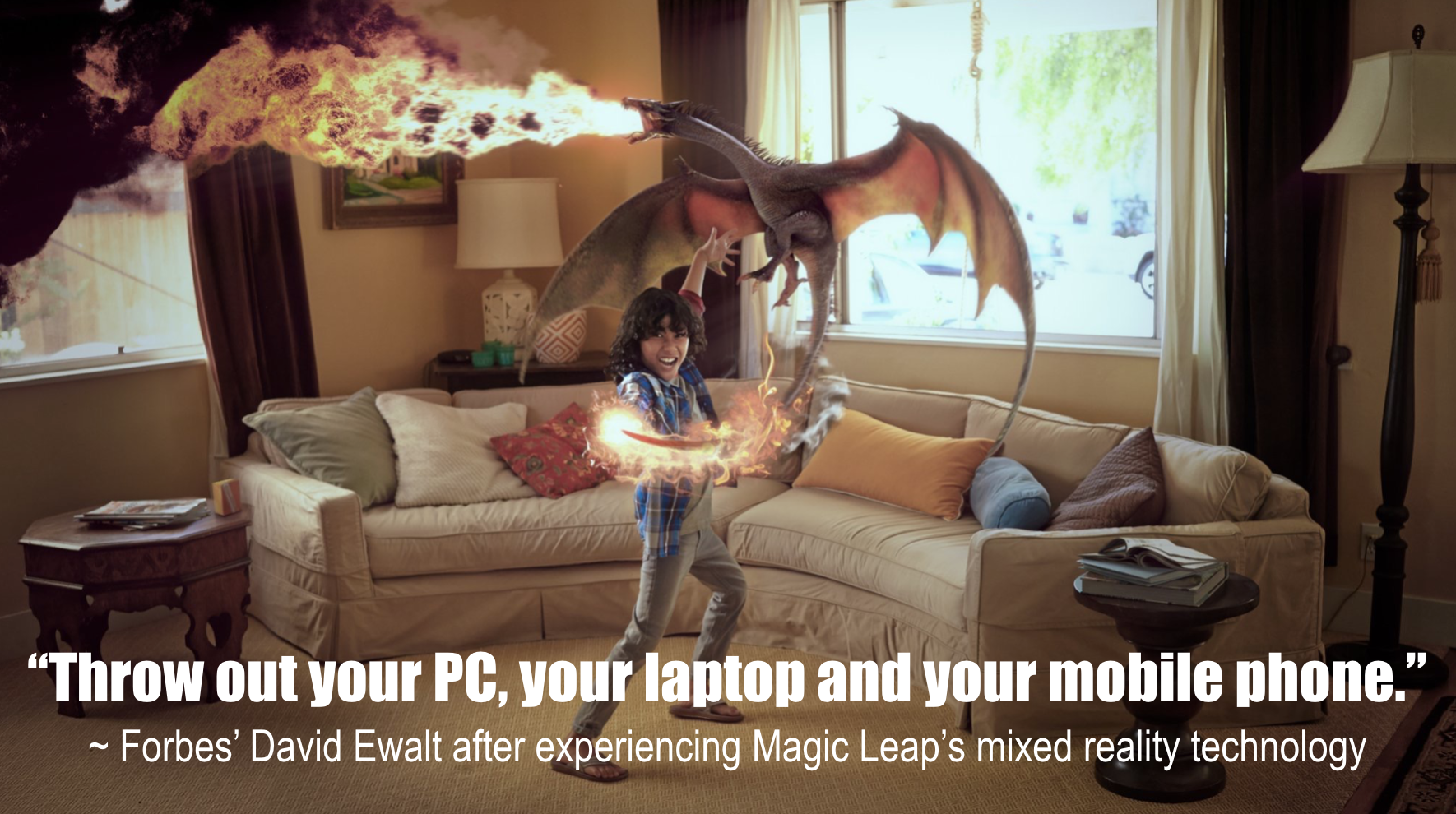
Imagine a mixed reality that is so real, you can’t tell if the animal in front of you or the person you are speaking to is real, or a hologram beamed in from somewhere else in the world.
Sound like a distant future? It already exists. Rony Abovitz created his company, Magic Leap, in 2010 to create 3D glasses that would project a digital light field over your eye, so your experience of real and virtual objects would merge into one.
After four years of development, Rony raised $50m from investors who were amazed at what he had created. Six months later, he raised another $542m. This year, he raised another $793m.
In total, investors have given him $1.4 billion and Magic Leap is now worth $4.5 billion - before Rony has launched his first product. His investors include Google, Alibaba, Warner Brothers, and a who’s who of Silicon Valley VCs.
Wired Magazine calls Magic Leap “The World’s most Secretive Startup”, but this week, David Ewalt got an inside look in Rony’s secretive lab. This is what he had to say:
“Throw out your PC, your laptop and your mobile phone, because the computing power you need will be in your glasses, and they can make a display appear anywhere, at any size you like.”
“Magic Leap’s innovation isn’t just a high-tech display–it’s a disruption machine. This technology could affect every business that uses screens or computers and many that don’t. It could kill the $120 billion market for flat-panel displays and shake the $1 trillion global consumer-electronics business to its core.”
And the most amazing thing? Magic Leap is looking to publicly launch its system sometime in the next 18 months.
Do you remember the first iPhone? Within 3 years everyone had a smart phone and most push button phones disappeared. When Magic Leap launches, it will make all the current clunky VR headsets redundant - together with all PCs, TVs and mobile phones.
Within 3 years - before 2020, most of us will have lightfield glasses or contact lenses, and will be able to magic up any size display or virtual assistants or environment with voice activated commands at any time.
All this, from the mind of Rony Abovitz. He remembers the first days of the start up: “I was the only employee, and it was literally in my garage. My mom made a piece of canvas with some colored letters on it that said, ‘Magic Leap Studios.”
How did he raise the money? He says “When we’d talk to people about what we were doing, they didn’t believe us. Then they’d fly in and go, ‘Oh … you’ve actually made these things happen.’ That was the dynamic of everyone who invested - ‘This is impossible’ to ‘We want in.’”
James Joaquin, one of Rony’s investors, says “We invested in Magic Leap because we believe their lightfield technology is the next big inflection point in technology after the PC, the Web and the smartphone. It has the potential to transform multiple global economic categories, including entertainment, education and productivity.”
David Ewalt explains the power of Magic Leap’s mixed reality:
“When you’re wearing the device, it doesn’t block your view of the world… The hardware also constantly gathers information, scanning the room for obstacles, listening for voices, tracking eye movements and watching hands.”
“As a result, mixed-reality objects are aware of their environment and have the ability to interact with the real world. On Magic Leap’s hardware a Pokémon might escape capture by ducking behind your couch or, assuming you live in a “smart” home, turning off your lights and hiding in the dark.”
“In one of its demos the Magic Leap team shows off a computer-generated “virtual interactive human,” life-size and surprisingly realistic. Abovitz and his team imagine virtual people (or animals or anything else) as digital assistants–think Siri on steroids, except with a physical presence that makes her easier to work with and harder to ignore.”
“First we had mainframes, then PCs, then mobile devices. If Magic Leap has its way, the next generation will be virtual.”
I remember at one of our Fast Forward events, I said most of us would no longer need to be carrying laptops and phones around by 2020. Most of everyone laughed, as they could not imagine a technology that would make them obsolete.
Rony’s about to change all that.
The future continues to arrive sooner than expected.
















Leave a Reply